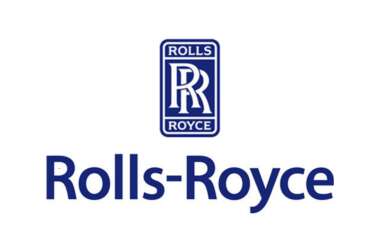In today’s era of cut-throat competition, it is no longer sufficient to be good at what you do. You need to stand out from the crowd and be different to gain a competitive edge.
This is where differentiation comes into play. Differentiation strategy is all about creating unique products or services that stand out among competitors. There are two types of differentiation strategies: Broad Differentiation Strategy and Focused Differentiation Strategy.
In this blog, we will delve deeper into Focused Differentiation Strategy – what it is, how it differs from broad differentiation strategy, and how you can create and implement one for your business.
We will also take a look at some successful examples of Focused Differentiation Strategies in action.
Lastly, we will cover the advantages and disadvantages of using this strategy so that you can make an informed decision on whether it is right for your business or not.
What is a Differentiation Strategy?

Imagine a differentiation strategy as a plan that businesses make to stand out from their competition. Instead of offering the same things as others, they aim to provide something special, something that makes their products or services different and unique.
The goal here is to get ahead in the competition. To do this, a business looks at what it’s good at, what it’s not so good at, what its customers want, and how it can give more value than others.
There are two types of differentiation strategies. One is a broad strategy, where a business tries to be unique in the entire market. The other is a focused strategy, where it aims to be special in a specific part of the market.
What is a Focused Differentiation Strategy?

A focused differentiation strategy is when a business aims to stand out by offering distinct features in a product or service tailored to a specific, narrow market or niche.
It involves concentrating efforts on a small group of consumers with unique needs, striving to provide more innovative, superior, or valuable offerings than competitors.
This strategy, also known as niche marketing or product specialization, is implemented when a company wants to cater to the specific demands of a well-defined customer segment within a broader market.
The key is to address the unique needs of this niche effectively.
What is a Broad Differentiation Strategy?

A Broad Differentiation Strategy is when a brand or business creates a distinct identity that sets it apart from competitors across an entire industry, appealing to a wide range of consumers. This strategy aims to find advantages that make the product or service unique on an industry scale.
To make it work, the market must be extensive, with many potential customers and various unresolved issues. For a product following a broad differentiation strategy to succeed, it must be widely appreciated by customers, and its uniqueness in a large market allows it to be priced higher than competing products.
An example of this is Morton Salt, which stood out by adding iodine to their salt in the 1920s, addressing a simple need and differentiating itself in a vast market.
How To Create A Focused Differentiation Strategy?
Creating a Focused Differentiation Strategy is like crafting a special plan to make your business stand out in a specific group of people. Let’s break down the steps in an easy way:
- Market Segmentation: Find a specific group of people (market) that fits well with what your business is good at. Understand who they are, what they like, and what they need.
- Market Research: Learn a lot about this chosen group. Figure out how they behave, what they like or don’t like, and what’s trending. Look for gaps or opportunities where your business can be different.
- Know Your Strengths: Identify what your business is really good at. Understand your strengths and weaknesses, both overall and for specific products.
- Identify Unique Value Proposition: Think about what makes your products or services special for this group. Understand how your stuff can be better or solve problems that others might miss.
- Product Development: Create products or services that match what this group really needs. Be innovative and design things that they will love.
- Tailored Marketing: Make marketing messages and ads that talk directly to this chosen group. Show how your stuff meets their specific needs.
- Personalized Customer Experience: Make sure the entire experience, from buying to getting help, feels just right for this group. Think about how they want to be treated.
- Communicate Through Bio and Social Media: Use your company website’s bio section to communicate your story. Engage with your audience on social media platforms. Share your products and services in a personal and relatable way.
- Create a Memorable Brand Image: Implement your strategy by delivering better quality. Be creative and consider rebranding if needed. Aim to capture new clients within your target audience.
- Build Relationships: Connect with the people in this group. Engage with them, maybe through special programs or building a community.
- Continuous Improvement: Always look for ways to make things better. Listen to what this group says and use their feedback to improve your products or services.
- Monitor Competitors: Keep an eye on other businesses that are also trying to be special in the same group. Understand what they’re doing so you can stay ahead.
- Measure Success: Decide on things that show if your plan is working well. Regularly check these things to see how you’re doing.
- Feedback Loop: Keep talking to the people in this group. Ask them for feedback and use it to make things even better.
- Flexibility: Be ready to change things if needed. Stay flexible and adjust your plan as the needs of the group or the market change.
By following these steps, your business can create a plan that makes it special and really connects with the people you want to reach.
How to Implement a Focused Differentiation Strategy?
The main goal of a focused differentiation strategy is to make people think that a company’s stuff is special and different from other things out there, like in how good it is, how it looks, how reliable it is, and what people think about it.
Now, let’s see how to do that with easy steps.
Identify your business objectives
The first thing to do when using a focused differentiation strategy is to set goals. Decide what you want to achieve with your business plan.
Goals could be things like making more money by selling more, getting more profits by charging higher prices, telling people about new product features through different ways, offering extra services, or building a community of loyal customers.
When planning future goals, think about the 4Ps of the Innovation framework: paradigm, process, position, and product innovation. Paradigm innovation means making existing products better or finding new ways to do things faster, cheaper, or simpler.
Process innovation is about changing how things work inside the business to make it more efficient and profitable. Positioning innovation is entering new markets or showing a product or service in a new way. And product innovation is creating new goods or services.
Conduct the research
Take a good look at what your company is good at and where it can improve. Think about the size and condition of the small market where your product or service is.
Then, check out what your competitors are doing and what their customers are saying. Also, think about the money and things you have to work with.
Now, find out more about the group of people you want to sell to. Ask your current customers what they think about your brand, products, and services through a survey.
Pay attention to what people are saying about products in general to know what they really want. This helps you understand what customers are looking for in a product.
Develop key differentiators
Your company needs to figure out what makes your products or services special compared to others. Instead of just looking at one thing, like quality or innovation, you can highlight different aspects such as quality, innovation, great service, or how you get your products out there.
You can choose to focus on any different differentiators such as
- being really good to your customers,
- creating unique products,
- running memorable marketing campaigns,
- implementing effective marketing strategies,
- utilizing product differentiation,
- offering high prices,
- developing an effective differentiation strategy,
- or following the principles outlined by Michael Porter, including focus strategies and generic strategies such as differentiation focus and competitive strategy.
Companies like Apple, Nike, and Starbucks are often considered examples of firms employing a broad differentiation strategy. Both groups try to be attractive to customers in general, which is an important characteristic shared by companies that use a cost leadership strategy and those that use a differentiation strategy share.
By creating a unique selling point that fulfills the demands of a narrow market, a company can charge a premium price and increase revenue in the case of focus differentiation, offering the essence of a focused differentiation strategy and the potential for great riches, important advantages, such as higher profit margins.
Create a value proposition
After you figure out what makes your product special, the next step is to create a value proposition. This is a statement that talks about the unique things your product does and why it’s valuable for customers.
In the value proposition, you should mention the good things about your product, how it solves problems for customers, and why it’s better than other similar products.
This statement then guides how you talk about your brand in ads and other marketing stuff. A handy tool for creating a value proposition is called a value proposition canvas.
Consider what matters to the people who might buy your product.
For example, if they care about the environment, you can talk about using recyclable materials in your messaging. But if they care more about how well the product works, focus on all the good things it does and how easy it is to use or how great it looks.
Build your Brand Image
The simplest way to make your company different from others is to create a brand image. This includes the ideas, feelings, or concepts connected to your company. Think about how you want your brand to be seen, what your team believes in, and your future plans.
The name of your brand is super important. It’s what people will remember and connect with your brand. A good name can make your company look trustworthy and show its values. So, make sure the name is short, easy to remember, and tells people what makes your business special.
Another important part of your brand image is how it looks. This means having a simple color palette, logos, fonts, patterns, and images used in your materials. These visuals create a consistent look for your brand.
Lastly, how you talk about your brand is crucial. This includes the language and tone you use in your ads, social media, and other content. The goal is to show your uniqueness so that people can tell your company apart from others.
We’ve covered the basic steps for making your company stand out. Next, we’ll look at examples of companies that did this well by focusing on specific groups of customers.
Advantages and Disadvantages of Focused Differentiation Strategy

Advantages:
- Strong Market Position: By using a Focused Differentiation Strategy with strategic planning, businesses can carve out a strong position within a specific market segment.
- Customer Loyalty: Creating tailored products or services fosters strong customer loyalty within the chosen niche.
- Premium Pricing: Businesses can charge higher prices with hefty premium because of the unique value they offer with their products or services.
- Reduced Competition: This strategy creates barriers that make it harder for new competitors to enter, reducing competitive pressure.
- Deep Customer Understanding: Focusing on a narrow segment enables a better understanding of customer needs.
Disadvantages:
- Limited Market Size: The strategy’s narrow focus may limit growth potential due to a restricted customer base.
- Intensified Competition: As the strategy gains attention, more competitors might enter the same niche, increasing rivalry.
- High Costs: Meeting the unique demands of the niche market can lead to higher production and operational costs.
- Vulnerability to Market Changes: Changes in the market or customer preferences might impact the viability of the chosen niche.
- Lack of Diversity: Relying too much on one niche can make the business vulnerable to economic fluctuations within that specific segment.
Before choosing a Focused Differentiation Strategy, businesses should carefully consider these pros and cons based on their goals, available resources, and willingness to take on risks.
Focused Differentiation Strategy Examples
Rolls-Royce Focused Differentiation Strategy

Rolls-Royce is a great example of a company that uses a focused differentiation strategy to be really special in the market.
Here’s how they do it:
- Niche Market Targeting: Rolls-Royce aims at super-rich people who want the very best in luxury and exclusivity. They focus on making things just right for this small group of elite customers.
- Unparalleled Luxury: Rolls-Royce is all about providing the absolute best in luxury and craftsmanship. Their cars are carefully made by hand using top-notch materials, making them super fancy.
- Customization: Customers can make their cars really unique, not just in looks but also in features. This means each car becomes extra special and exclusive.
- Unique Experience: Rolls-Royce makes sure that every step, from visiting their showroom to getting the car, feels personal and exclusive. This creates a special feeling for the customers.
- Differentiation from Mass Market: Unlike regular car companies that target a lot of people, Rolls-Royce focuses only on a small, special group. This lets them make cars that are exactly what their unique customers want.
By doing all this, Rolls-Royce stands out from the usual car companies. They’ve made a brand that’s all about being the best for a small, exclusive group of people who love luxury and individuality.
Rolex Focused Differentiation Strategy

Rolex is known for making fancy watches that are not just for telling time but are symbols of luxury and excellence.
They’ve become really special in the watch world by doing a few things right:
- Iconic Brand Identity: Rolex is a big name that everyone links with fancy watches. People see it as a symbol of luxury and top-notch quality.
- Prestige and Precision: Rolex watches aren’t just for telling time; they’re symbols of being prestigious. By making really accurate watches that also look timeless, Rolex attracts people who want both function and status.
- Leader in Horology: Rolex is a top player in the watch world because they never compromise on quality, craftsmanship, and new ideas. They keep making watches that stay ahead in the industry.
- Limited Production: Rolex doesn’t make a ton of watches on purpose. This makes them rare and more desirable for collectors and fans.
- Timeless Design: Rolex designs never go out of style. They skip the trendy stuff and focus on making watches that will always look good, making them valuable for a long time.
- Craftsmanship and Innovation: Rolex puts a lot of effort into making watches perfectly. They use new technology and pay super close attention to details to make sure every watch is amazing.
- Exclusivity: Because Rolex doesn’t make a ton of watches, and they are always in style, owning one makes you part of an exclusive group. It’s not just a watch; it’s like being in a special club.
- Enduring Legacy: Rolex’s plan to be special has worked for a long time. People often pass down Rolex watches through generations, making them timeless treasures.
- Global Recognition: Rolex is known and loved all around the world. People from different cultures see Rolex as a symbol of quality and luxury.
- Community and Culture: Rolex is not just about watches; it’s part of bigger conversations about achievement and success. It’s connected with a commitment to being the best.
What is a Focused Cost Leadership Strategy?

A focused cost leadership strategy is like a plan where a company tries to be the most affordable option in a small market. This doesn’t mean they have the cheapest prices overall. Instead, they aim to have lower prices compared to other companies in that specific market they’re focusing on.
Focus Cost Leadership Strategy Examples
Here are some examples of companies using a focused cost leadership strategy:
- IKEA – Furniture retailer offering low prices by cutting costs on transportation, packaging, and having customers assemble products. Focuses on young adults furnishing their homes.
- Spirit Airlines – Budget airline serving price-sensitive leisure travelers by removing frills and extras to keep fares extremely low.
- Aldi – No-frills grocery chain keeping costs down via store brands, limited selection, and minimal staffing to offer discounts to value-conscious shoppers.
- Motel 6 – Provides clean, basic hotel rooms at the lowest rates for budget-minded travelers not needing amenities. Minimizes operating costs.
- Costco – Offers bulk-sized products at wholesale prices to small business owners and large families seeking deals. Requires membership fees.
- Dollar General – Neighborhood general store targeting low-income consumers with discounts on everyday essentials and closeout merchandise.
The key is these companies concentrate their low-cost position on a particular buyer segment rather than the market as a whole. This focused strategy allows them to effectively compete on price within their niche.
Using Market Research to Craft a Focused Brand Positioning Strategy
An effective focused differentiation strategy relies on thorough market research to identify a niche target audience and their specialized needs. Businesses can then develop a unique brand positioning with messaging tailored to industry verticals like financial services.
Marketers utilize segmentation to determine whether to adopt a TOFU or BOFU approach and optimize the 5 Ps of marketing. This drives paid acquisition while conveying differentiation. With consistent brand building, businesses can stand out via focused differentiation.
FAQ’s:
How can a company use market research to determine if a focused differentiation strategy is right for them?
A company can conduct market research to identify a niche segment with specialized needs in different settings. They can then survey potential customers in that segment to see if they would value a uniquely tailored offering with unique features that fulfill the desires of a narrow market and a single sales channel.
If the research shows customers want and will pay for differentiation, then a focused differentiation strategy, including a single sales channel, may be suitable.
How does a company implement a focused differentiation strategy in their operations and marketing efforts?
To implement a focused strategy, a company designs unique product features for the niche. They promote these differentiating features in marketing to the target segment. Operations are streamlined to efficiently deliver the specialized offering. Pricing and distribution channels also focus on the niche segment.
What role does branding play in a company’s focused differentiation strategy?
Branding is key for a focused strategy. A company must build a brand tailored to the niche target segment. This highlights the specialized offering and establishes an emotional bond with niche customers. The branding supports premium pricing of the differentiated offering.
Can a company switch from another business strategy to a focused differentiation strategy? If so, how?
Yes, a company can switch to a focused differentiation strategy. They would need to research and select a niche target segment, then develop unique capabilities and branding for that segment. The company would promote differentiation features over low cost or volume. Operations would also be reoriented around the niche.
Conclusion
To conclude, a focused differentiation strategy allows businesses to stand out from their competitors by offering unique and tailored products or services to a specific target market.
This strategy requires thorough research, identification of key differentiators, and the development of a strong brand image.
While this approach offers advantages such as customer loyalty and premium pricing, it also has its drawbacks, including higher costs and potential limitations in market reach.
However, successful examples like Rolls-Royce and Rolex demonstrate the effectiveness of a focused differentiation strategy in creating a strong competitive advantage.
By implementing this strategy thoughtfully and consistently, businesses can differentiate themselves in the market and achieve long-term success.

